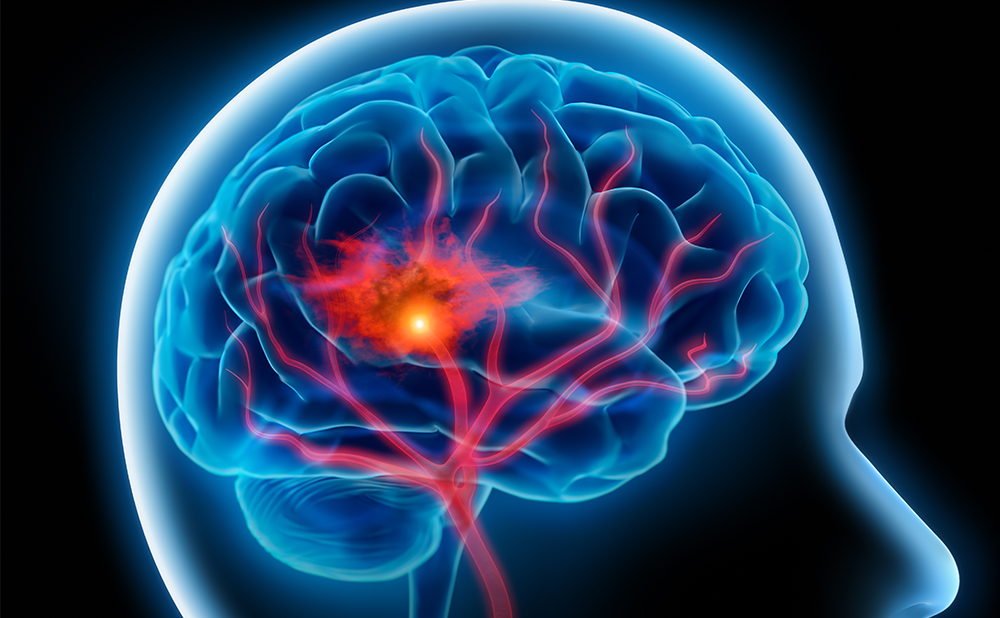The North American Brain Tumor Consortium (NABTC) is one of three multi-institutional consortia initially funded by the National Cancer Institute (NCI) in 1994 with the primary purpose of efficiently evaluating novel treatments in adults with central nervous system (CNS) tumors. Its current counterpart is New Approaches to Brain Tumor Therapy (NABTT) and although the consortia share common goals, they have thus far had separate identities and infrastructures. As a new era begins in which these two consortia will merge to form the Adult Brain Tumor Consortium (ABTC), it is important to reflect on and learn from past successes and failures. Therefore, I am happy to have been asked to write this editorial describing the lessons learned at the NABTC and how the organization has influenced neuro-oncology clinical research.
The NCI’s decision to prioritize early clinical trials in this orphan disease was a critical step in forming the consortia. The recognition of the significant morbidity and high mortality associated with CNS tumors, despite the relatively low incidence compared with other solid tumors, and the dedication of basic science and clinical researchers to improving the outcome of patients were important factors in the success of the consortia. By 1994, the field of neuro-oncology had grown enough to sustain the clinical research effort proposed by the NCI. Prior to this effort, most therapeutic agents were inherited from phase I experience in solid cancers and subsequently tested in neuro-oncology patients. One reason for this was the reluctance of pharmaceutical companies to invest in early clinical development of their product in such a small-volume disease. There were also concerns that agents would not be safely tolerated by patients with a CNS disease that carried such a poor prognosis. A major advantage of forming the NABTC was that it established the credibility needed to generate funding for research and to gain access to new agents for early testing in brain tumor patients. One important objective of the consortia, therefore, was to demonstrate the ability to complete well-designed and -conducted multi-institutional phase I/II trials in this challenging patient population. Bolstered by public awareness regarding the need for clinical research devoted to brain tumors and an increase in patient advocacy groups, a significant effort began to better understand the disease and find effective therapies.
Under the leadership of Michael Prados, MD, the NABTC invited 10 institutions to participate in the consortium. All principal investigators (PIs) and representatives from each site met twice a year to review the progress of the consortium with respect to patient accrual, data management and regulatory compliance, and proposals for new protocols, and to discuss priorities for the group. Monthly conference calls also facilitated communication among the members and were critical for discussion of toxicity assessments and plans for dose escalation in phase I studies. Because all PIs had equal responsibility and authority in the decision-making process, new initiatives could be implemented expeditiously and without the impediments posed by a large, bureaucratic infrastructure. Individual sites were held accountable for meeting the expectations outlined in the grant written for each study and were assessed for intellectual contribution to the research agenda, patient accrual, and regulatory compliance. A central data management center, dedicated biostatistical support, and a pharmacokinetic core were key initial components of the consortium. Many members of the NABTC relied on National Institutes of Health (NIH)-funded general clinical research centers to assist with the administration of the agents and the acquisition of multiple blood samples for pharmacokinetic analyses. To date, more than 1,000 patients, primarily with recurrent malignant glioma, have been accrued.
To improve the scientific rigor of the studies, protocol templates were developed to standardize key elements of clinical trial design. These included eligibility criteria, end-point assessment, and biostatistical considerations. This also allowed for the generation of a robust database to test hypotheses for future studies. In addition, the mandate that all phase I studies have accompanying pharmacokinetic end-points was critical to achieving a better understanding of the influence of concomitant medications typically used in brain tumor patients. One of the NABTC’s early findings was that hepatic enzyme-inducing anti-epileptic drugs (EIAEDs) could alter the pharmacokinetic parameters and toxicity profiles of therapeutic agents. This was shown for cytotoxic and molecularly targeted agents.1,2 Trial designs in neuro-oncology have since evolved to test the agent in patients not taking EIAEDs first to determine efficacy. Only if there is evidence of efficacy in this patient population is there a reason to perform phase I testing in patients on EIAEDs to establish the appropriate dose for phase II evaluation. This strategy optimizes both patient and financial resources and expedites the assessment of an agent’s clinical utility.
As knowledge of dysregulated signaling pathways that influence glioma pathogenesis expanded, molecularly targeted strategies were tested in the NABTC. The challenges of designing and conducting these specific types of trials have been described in more detail elsewhere.3 Key findings of this review were the need to perform early studies to validate target modulation in a select group of patients before expanding to phase II testing; the importance of defining the appropriate patient population who may benefit from treatment; and the potential role of surrogate end-points of activity. Specific lessons learned from the evaluation of anti-angiogenic agents include the difficulty of assessing ‘response’ using standard magnetic resonance imaging (MRI) criteria and the need to prospectively incorporate physiologic imaging such as diffusion-weighted imaging, MR spectroscopy, and cerebral vascular perfusion imaging into the clinical trial design of these agents. The new merged consortium is poised to take on these challenges as novel therapeutic approaches are explored.
The multidisciplinary nature of the consortium fostered the close interaction of basic scientists, surgeons, and medical neuro-oncologists in the development and completion of translational studies. Examples of success of this paradigm were the correlative studies assessing suppression of O6-alkylguanine-DNA alkyltransferase in tissue samples from patients exposed to various doses of O6-benzyl guanine4 and a phase I study of adenovirus-mediated p53 gene therapy for recurrent malignant glioma in which samples of tissue were acquired from patients following an injection of the modified virus to assess distribution of the gene.5 These studies were critical in setting the stage for highlighting the importance of correlative end-points for biological therapies.6 More recent studies evaluating lapatinib and cilengitide were designed with tissue acquisition as part of the eligibility criteria. In addition, recent collaboration with the neuro-oncology branch at the National Institute of Neurological Disorders and Stroke (NINDS) to perform pure tissue acquisition studies as part of the Glioma Molecular Diagnostic Initiative has resulted in the accrual of specimens for detailed molecular and cytogenetic analysis.
The funding of Specialized Programs of Research Excellence (SPORE) grants for brain tumors in 2003 also positioned the NABTC as a conduit to move pre-clinical translational efforts to the clinical arena. Another synergistic effort included the expansion of clinical trials from the NABTC to other NIH-funded co-operative groups. An example of this is the initial experience of temozolomide and irinotecan administered to patients with recurrent high-grade glioma in the NABTC, which was then expanded to the Radiation Therapy Oncology Group (RTOG), where a phase II adjuvant study in glioblastoma was performed. The NABTC has also merged databases with the North Central Cancer Treatment Group (NCCTG), generating a risk-factor analysis in patients with recurrent high-grade glioma that can be used to stratify patients in subsequent studies. This will ultimately refine our ability to assess the true benefit of therapies, as opposed to the confounding effects of prognostic factors. This strategy of synergism with NCI research efforts will continue with the merger of the NABTC and NABTT.
Perhaps one of the biggest contributions of the NABTC to the field of neuro-oncology has been the provision of a forum for mentoring young investigators that allows them to develop clinical trial expertise and leadership skills. A formal mechanism existed by which junior investigators could become associate members of the NABTC and participate in executing clinical trials under the guidance of more experienced investigators. They could then be invited to become full members of the consortium based on their performance and evaluations. PIs were also encouraged to lead trials, present at national meetings, and publish results of trials as part of their participation in the consortium. This educational component cannot be overemphasized. Exposure of PIs through presentation of results at national and international oncology meetings has increased interactions with pharmaceutical entities, among other institutions. In fact, the ability to rapidly report on the results of phase I/II testing of agents stimulated interest among pharmaceutical companies to consider this patient population early on in drug development. Many members of the consortium have served in a leadership capacity at their institutions, as members of other NIH-funded cooperative groups, as members of the Editorial Boards of major clinical oncology and neuro-oncology journals, and in the Society of Neuro-oncology (SNO).
Sites for the NABTC meetings rotated among the various member institutions, and this allowed the individual PIs to highlight their neuro-oncology programs. The opportunity to meet socially at these meetings built friendships and collaborations among colleagues who shared the same passion for taking care of patients and finding new treatments for CNS tumors. In an area of oncology where advances have been slow and physician burn-out can be prevalent, the camaraderie fostered by the consortium has been critical to ensuring that we all remain engaged in the discovery process and can keep focused on why we have chosen to be in this challenging field. ■
Acknowledgment
The author thanks Ilona Garner, Department of Neurological Surgery, University of California, San Francisco, for editorial support.














